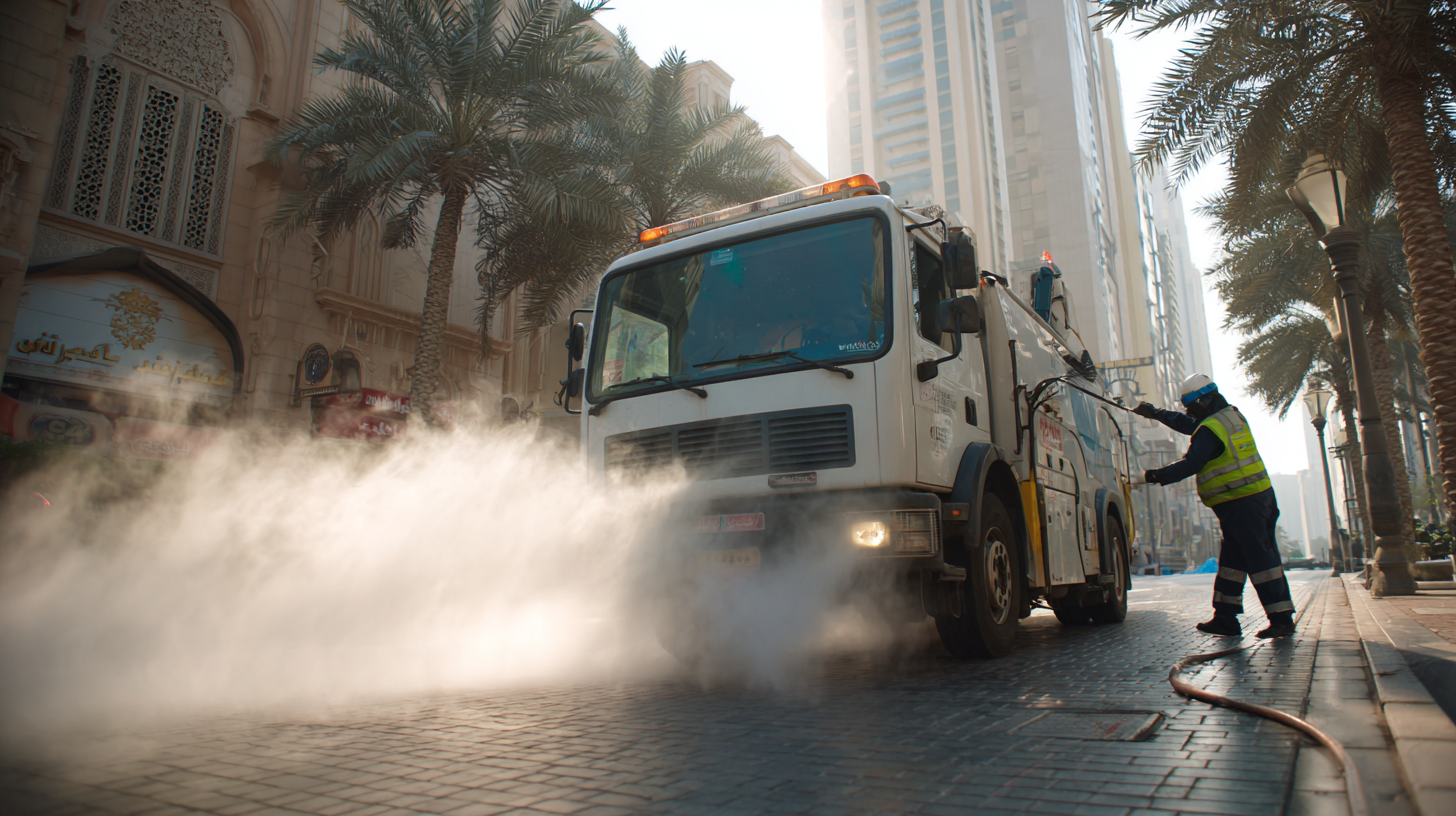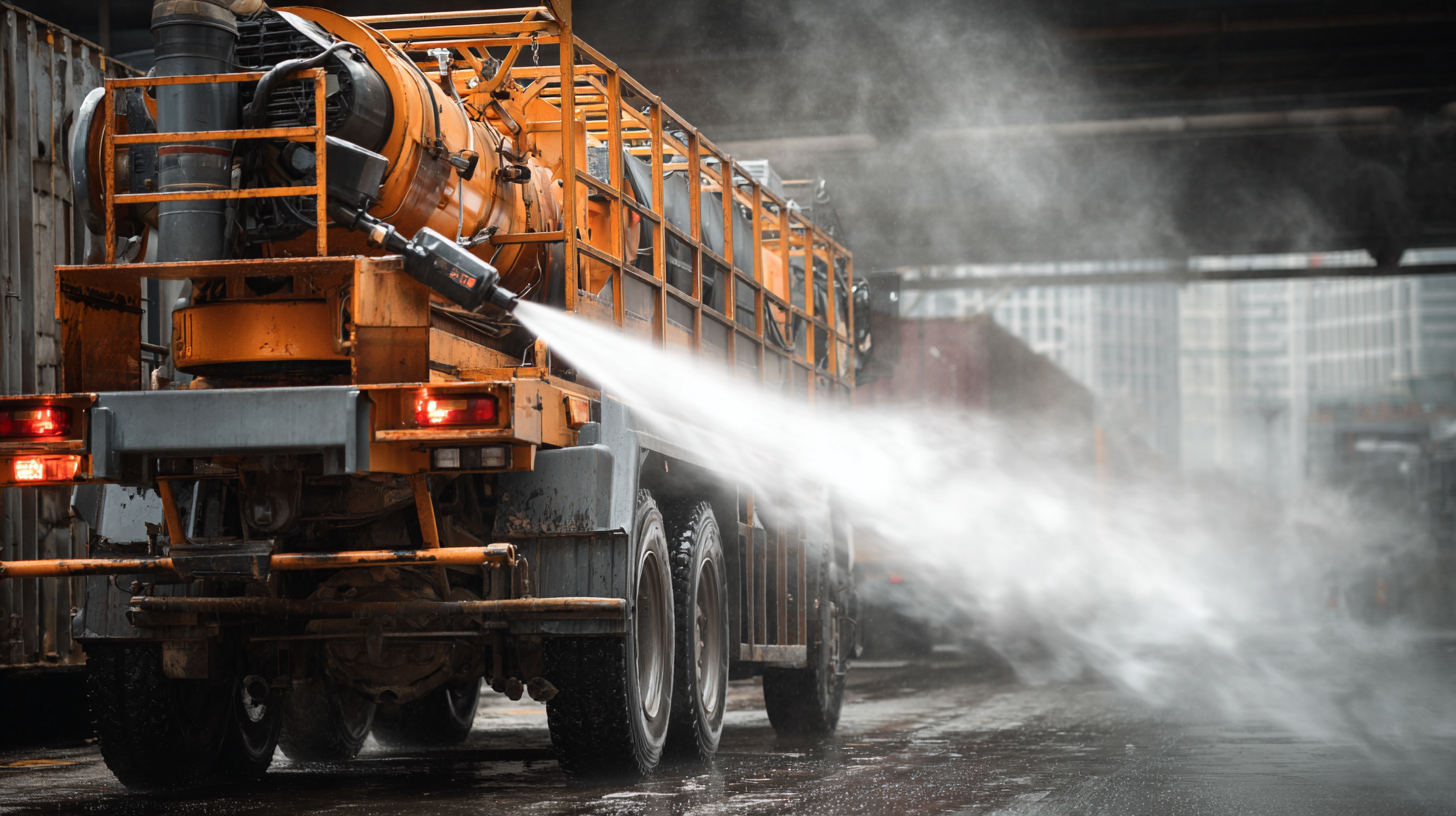Leave Your Message
-
Phone
-
E-mail
-
WhatsApp
In the battle against dust pollution, the effectiveness of Dust-Suppression Water Cannons has been increasingly recognized within various industries, particularly in construction and mining sectors. According to a recent report by the Environmental Protection Agency, inadequate dust control contributes to air quality degradation, which can lead to serious health risks, including respiratory diseases in workers and surrounding communities. As companies strive to meet regulatory standards while ensuring operational efficiency, the demand for innovative dust suppression techniques has surged. Proper selection of high-quality manufacturers of Dust-Suppression Water Cannons becomes imperative, as the right technology can reduce airborne particulate matter by up to 80%, significantly enhancing workplace safety and environmental compliance. In this blog, we will unveil five secrets behind the best techniques for using Dust-Suppression Water Cannons, ensuring you harness the maximum potential of this critical resource while making informed purchasing decisions.

The demand for dust suppression technologies in industrial settings is steadily rising, driven by the urgent need for cleaner and safer working environments. The global industrial dust collector market is projected to expand from $8.27 billion in 2025 to an estimated $11.96 billion by 2032, reflecting a robust compound annual growth rate (CAGR) of 5.4%. This growth is fueled by heightened awareness of health risks associated with dust exposure, particularly in sectors such as construction, where dust generation is significant.

Construction activities are known for contributing substantially to environmental pollution, with construction dust being a primary concern. Studies indicate that effective control practices are essential for minimizing dust exposure and promoting cleaner production processes. As industries face increasing regulatory scrutiny and public demand for sustainability, investing in advanced dust suppression technologies, such as water cannon techniques, is becoming imperative to ensure compliance and enhance operational efficiency. Embracing these technologies is not just a matter of regulatory adherence but a crucial step towards fostering a healthier work environment and mitigating environmental impact.
The dust suppression industry is poised for significant growth, projected to reach a market value of $6 billion by 2025, according to the latest reports from Market Research Future. This growth is primarily driven by the increasing awareness of environmental regulations and the need for effective pollution control measures across various sectors, including construction, mining, and agriculture. As urbanization accelerates and industries expand, the demand for innovative dust suppression techniques, such as water cannons and misting systems, is becoming more crucial to ensure compliance with stringent environmental standards.
In addition, technological advancements in dust suppression methods are contributing to the industry’s expansion. The integration of automated systems and smart sensors is enabling real-time monitoring and regulation of dust control measures, enhancing efficiency and effectiveness. A recent study by Allied Market Research indicates that the construction segment alone will account for the largest share of the dust suppression market, growing at a CAGR of 6% between 2020 and 2025. This trend highlights not only the robust demand for cutting-edge dust control solutions but also the commitment to sustainable practices that will shape the future landscape of the industry.
Advanced water cannon techniques have become a cornerstone in the effort to mitigate airborne particulates in various industrial settings. According to a report from the Environmental Protection Agency, over 100 million tons of airborne dust are generated in mining operations alone each year, significantly impacting air quality and worker health. Effective water cannon systems can reduce dust emissions by up to 90%, effectively improving visibility and safety on work sites.
The benefits go beyond immediate air quality improvement. A study by the National Institute for Occupational Safety and Health (NIOSH) revealed that reducing airborne particulates can lead to a 25% decrease in respiratory diseases among workers in high-dust industries. By utilizing advanced techniques such as high-pressure nozzles and automated spray patterns, industries can ensure more efficient dust suppression. This not only enhances worker health and safety but also complies with ever-stricter environmental regulations, leading to reduced liability and enhanced community relations.
| Technique | Water Flow Rate (L/min) | Coverage Area (m²) | Reduction of Airborne Particulates (%) | Key Benefits |
|---|---|---|---|---|
| High-Pressure Spray | 1200 | 3000 | 85 | Effective for large areas, low water usage |
| Fine Mist Application | 800 | 2500 | 90 | Highly efficient, minimizes water waste |
| Wet Method | 1500 | 4000 | 75 | Long-lasting effects, prevents dust re-emission |
| Fog Cannon | 1000 | 3500 | 80 | Reaches difficult areas, wide mist distribution |
| Mobile Water Cannon | 1300 | 2000 | 88 | Versatile use, can adapt to various environments |
Water cannons have emerged as an effective solution for dust suppression across various industries. A notable example can be drawn from the mining sector, where dust management is crucial for both environmental and health regulations. In several case studies, companies have reported a significant reduction in airborne particulate matter after implementing advanced water cannon systems. These systems not only minimize the dust generated during mining operations but also improve overall air quality for workers and nearby communities.
In the construction industry, water cannons have been successfully deployed to control dust during demolition and site preparation. For instance, a large-scale construction project utilized mobile water cannon units strategically placed around the site, which resulted in a 70% decrease in dust emissions. This not only enhanced visibility for construction workers but also reduced complaints from adjacent neighborhoods, showcasing the dual benefit of operational efficiency and community relations. By examining such successful implementations, it's clear that water cannons are becoming indispensable tools for industries aiming to maintain compliance and promote a healthier work environment.

When it comes to dust suppression in various industries, a comparative analysis of traditional methods versus modern water cannon technologies reveals significant advancements. Traditional dust suppression techniques, such as manual spraying or the use of water trucks, often struggle to provide consistent coverage across large areas. These methods can be labor-intensive and may lead to water wastage, or insufficient dust control, especially in expansive locations like construction sites or mining operations.
In contrast, modern water cannon technologies have revolutionized the approach to dust control. Utilizing high-pressure jets, these cannons can efficiently disperse water over a wide range without the need for excessive manpower. Moreover, advancements in automating these systems allow for precise targeting of dusty areas, ensuring optimal water usage and enhanced effectiveness. Additionally, many of these modern systems incorporate features such as adjustable spray patterns and remote control operation, significantly improving operational efficiency and reducing reliance on manual labor. This shift not only enhances dust suppression outcomes but also promotes environmental sustainability by minimizing water waste.
